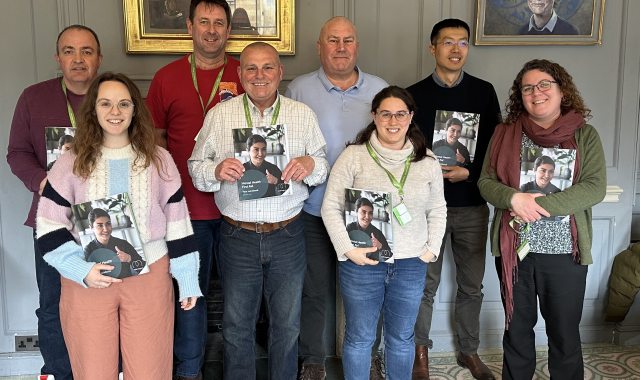Under the knife
Adventures in pre-modern medicine
16 March to 29 June 2023

Surgical instruments from Hieronymus Fabricius, Opera chirurgica in pentateuchum (1666, K.29.12).
Gonville & Caius College nurtured some considerable figures in pre-modern medicine, most notably John Caius (who refounded the college he had entered as Gonville Hall), William Harvey, and Francis Glisson. The College’s strength in medical education in the later sixteenth and the seventeenth centuries is reflected in its Lower Library, which holds a large medical collection in manuscript and early print. This exhibition is an adventure in the breadth and variety of pre-modern medicine, both within the university and outside it.
The College's manuscripts, such as its example of the 'nine-figure' series of anatomical diagrams, point to the basis of medieval European medicine in knowledge repeatedly handed down, its sources remote. The early modern works of Caius and Guillaume de Baillou illustrate a new engagement with ancient Greek texts, as distinguished followers of Galen and Hippocrates respectively. They were contemporaries of innovators like Andreas Vesalius, who rejected ancient authority and recentred the study of anatomy on the dissection of human bodies, Hieronymus Fabricius, who continued these explorations with a new emphasis on surgery, and his student Harvey, the pioneer physiologist who established the circulation of the blood.
Still the workings of the body remained so widely unclear that a brilliant private physician might believe in the relevance of astrology (as with de Baillou), or a university professor maintain that two distinct heats were present in fever (Daniel Sennert). In the alternative early modern medical tradition of Paracelsus, Rudolph Goclenius argued that combat wounds could be healed by applying a salve to the weapon that caused them; unhampered by any medical training, the vicar Edward Topsell praised the curative powers of the unicorn's horn in his old-fashioned bestiary.
Topsell’s whim harmed no one, but medicine in the early modern period was ridden with self-proclaimed doctors selling treatments that might be useless or worse: Richard Banister witnessed a disturbing example of quack dentistry in Cambridge. The pills and elixirs that John Case advertised may or may not have contained actual medicine. However, the quest of genuine physicians to identify the plants that their ancient Greek forerunners had used as drugs spurred a ‘reform of botany’, and new herbals such as that of William Turner, based on original observation, ‘mirror[ed]’ the contemporary anatomies of Vesalius and his followers.1 The knife of our exhibition’s title is that of the botanist, as well as the anatomist and surgeon.
1. Roy Porter, The Greatest Benefit to Mankind (London: HarperCollins, 1997): 191.

